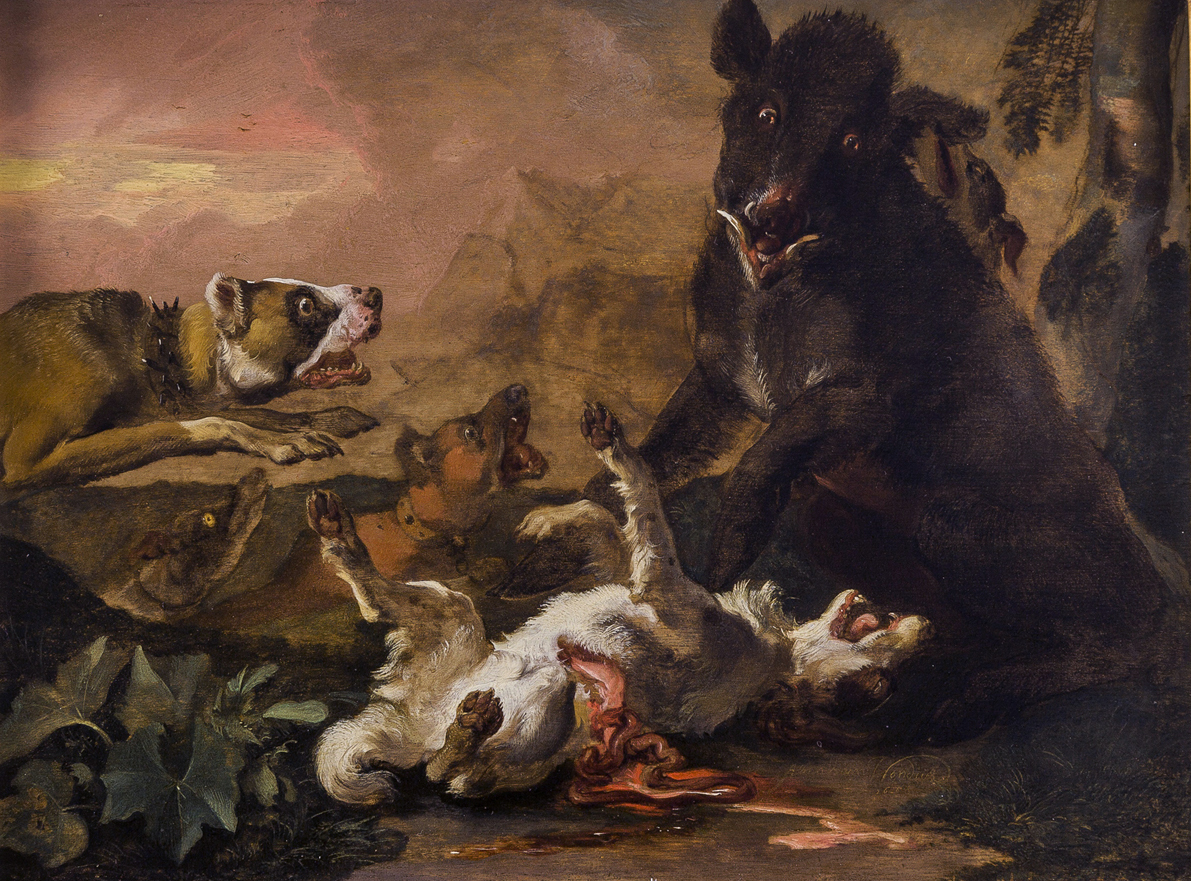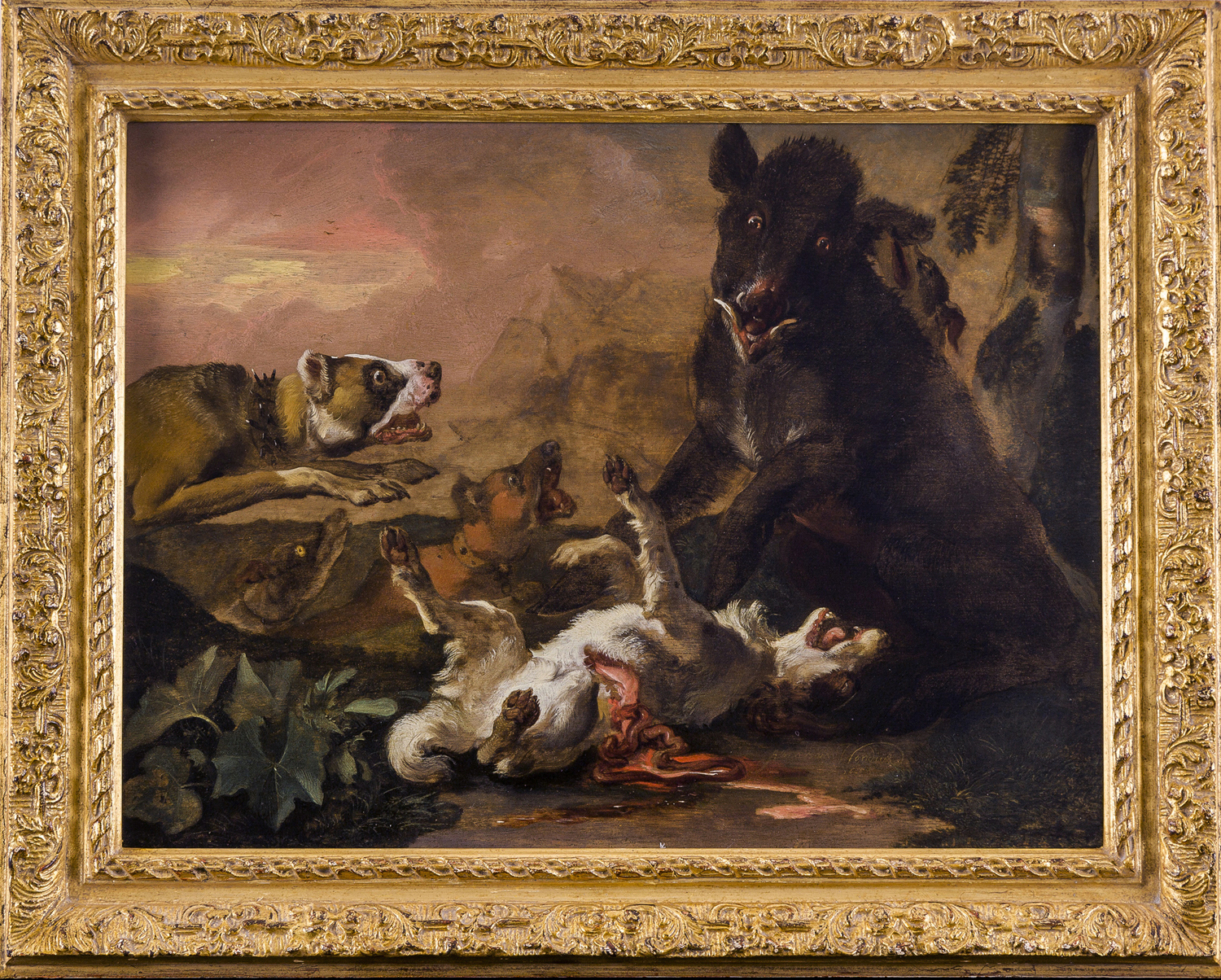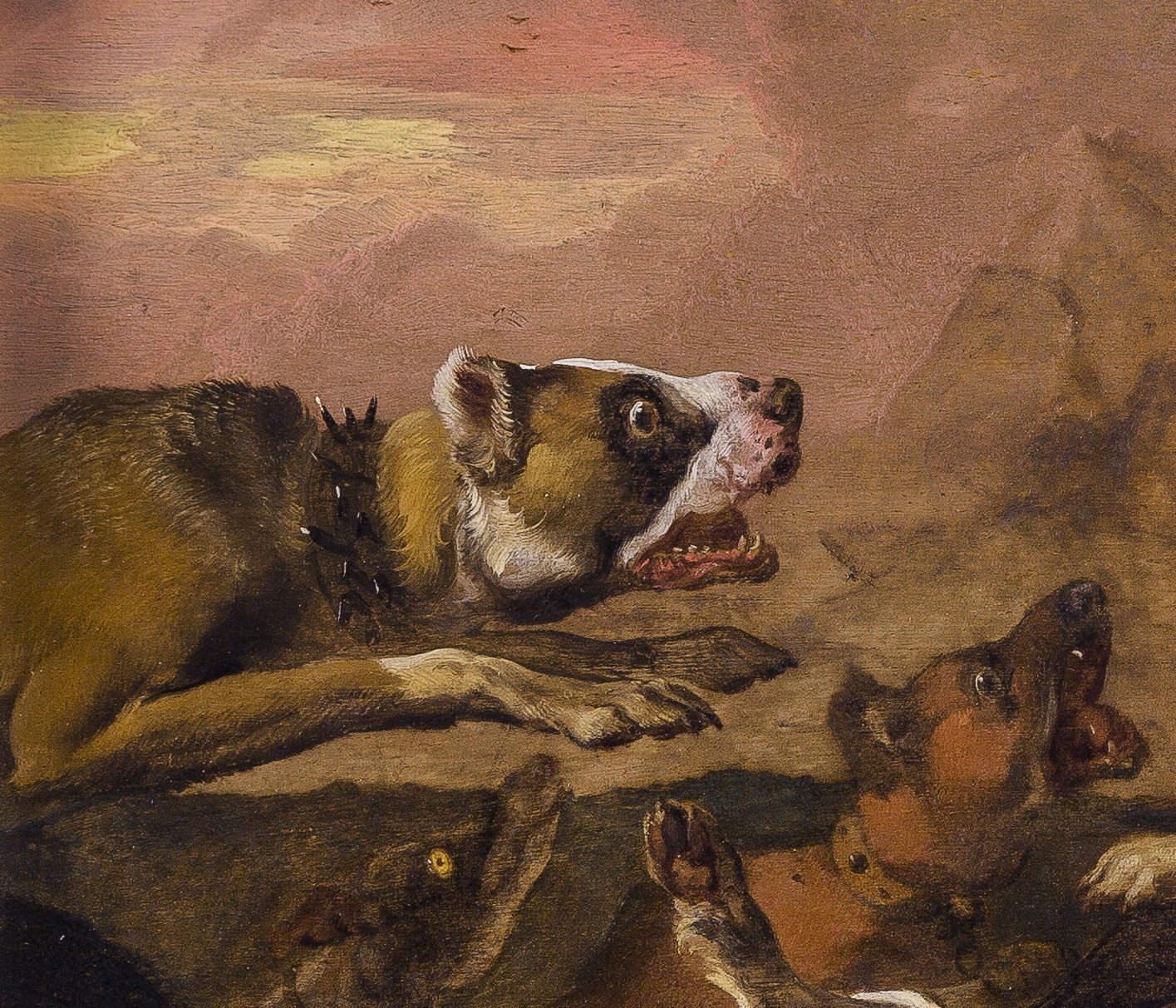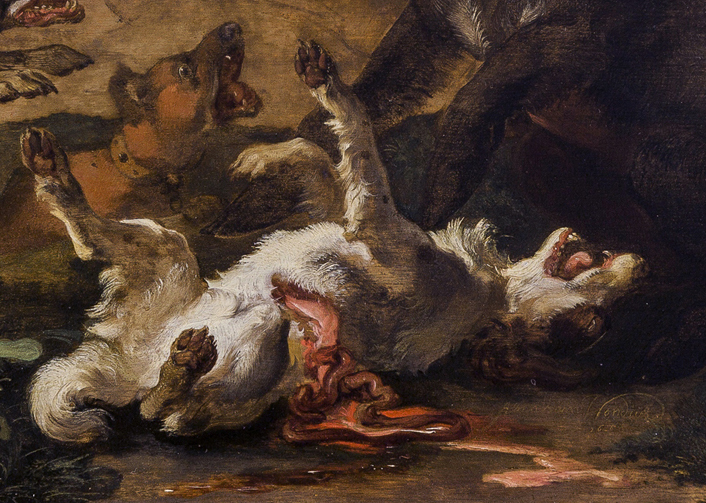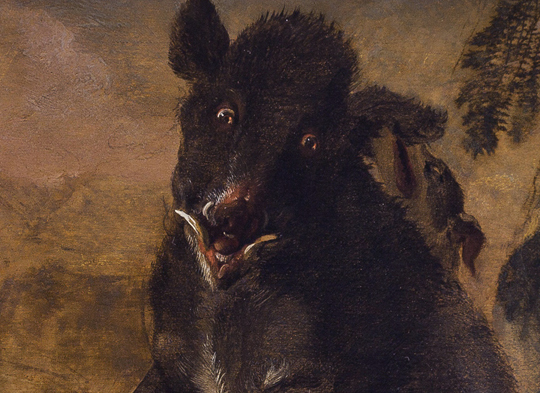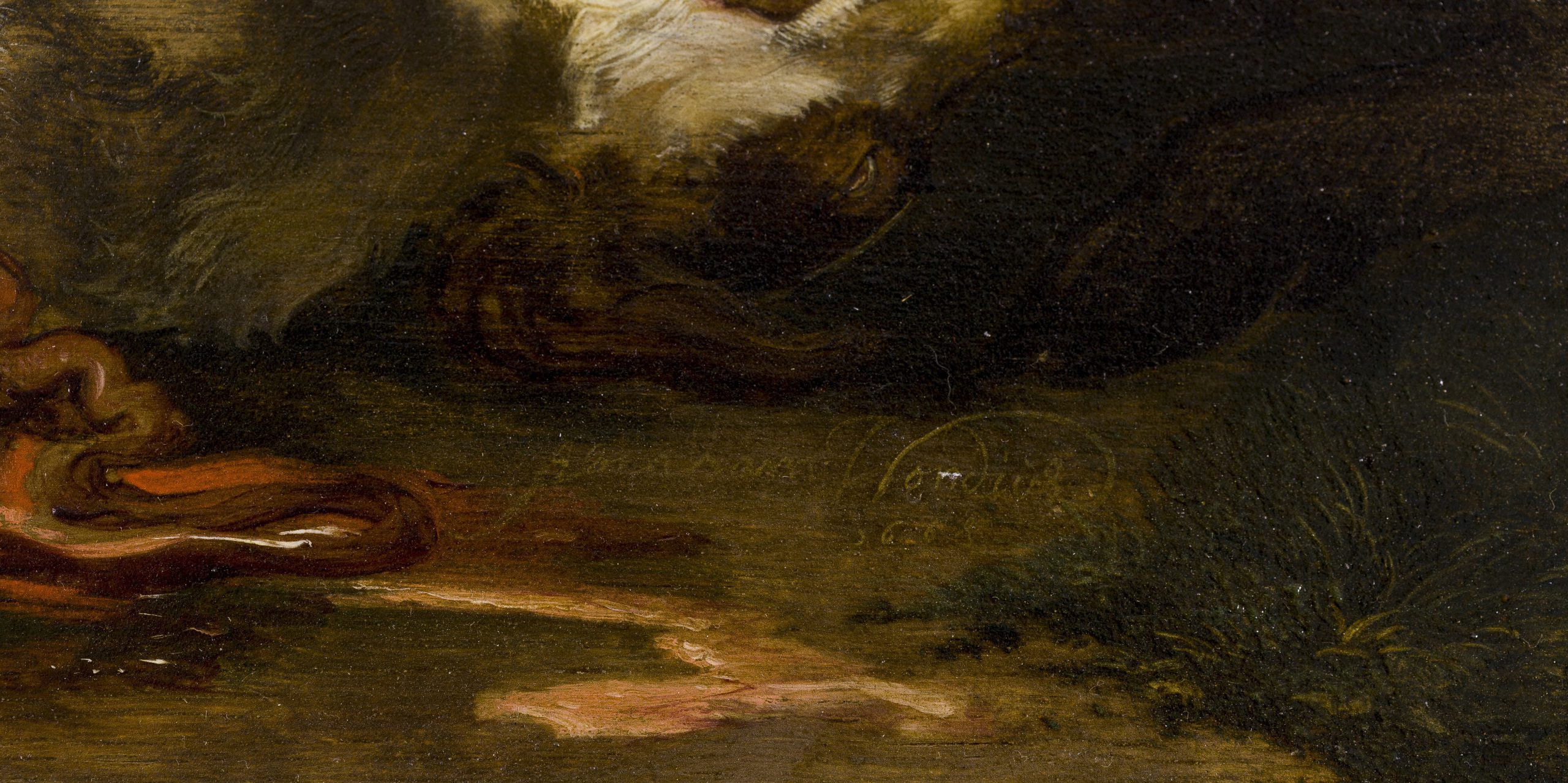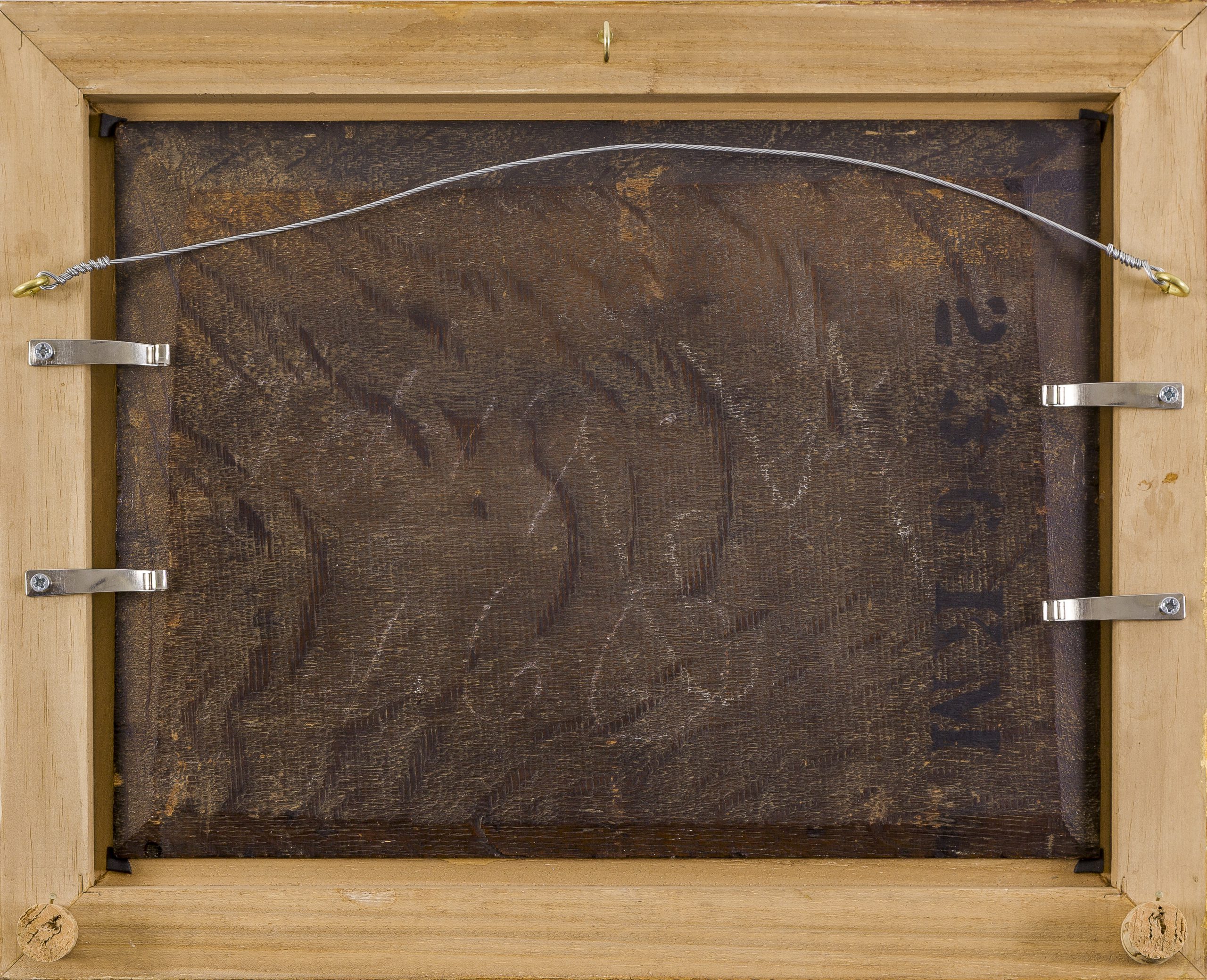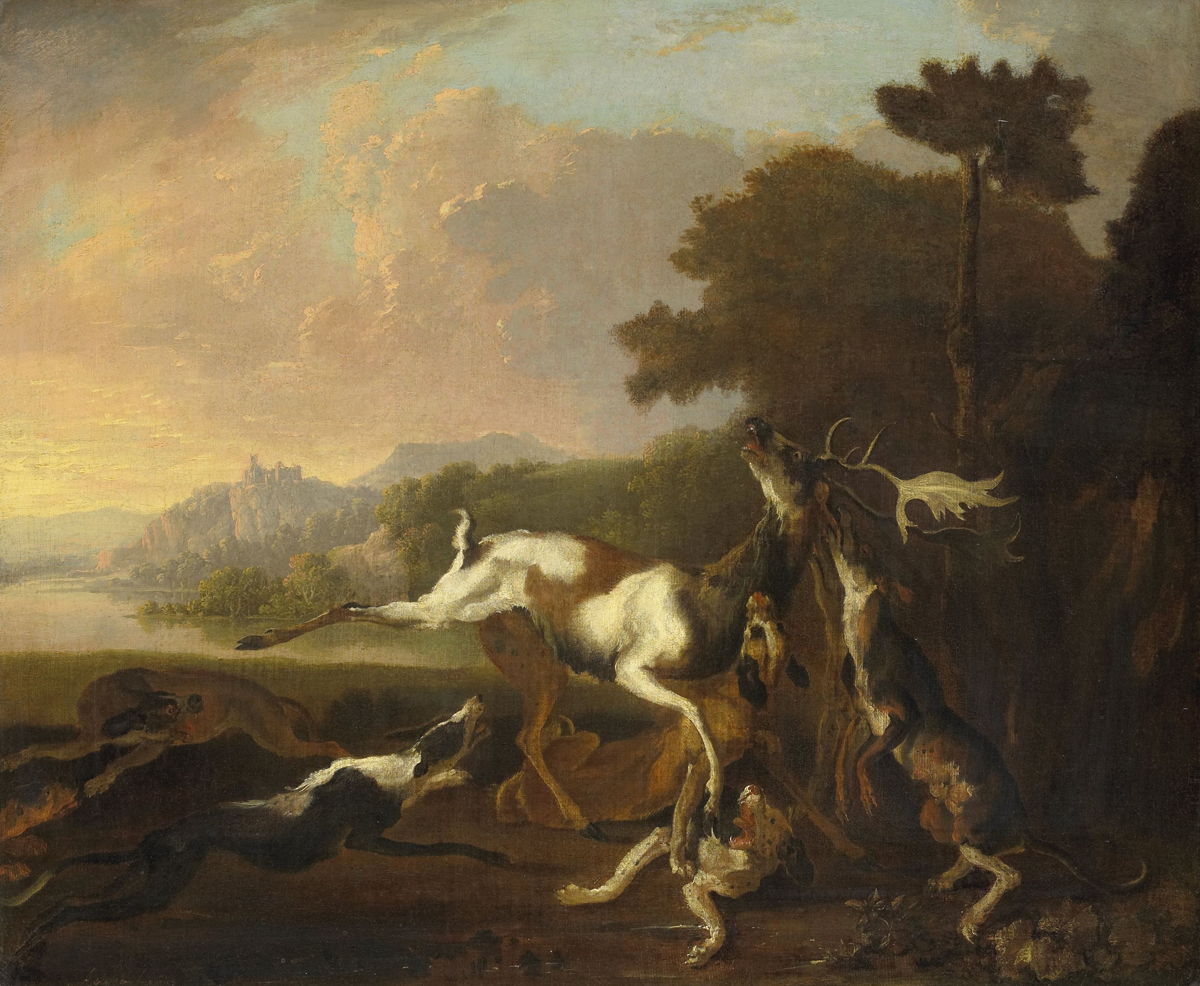ABRAHAM HONDIUS (Rotterdam c.1631 – 1691 London)
Abraham Hondius (Rotterdam c.1631 – 1691 London)
Dogs Attacking a Boar
Oil on panel, 25.8 x 35 cm (10.2 x 13.7 inch); presented in a modern carved and gilded frame of 17th-century model
Signed and dated ‘Abraham Hondius / 1668’
Provenance
Private collection, Sweden, 1950s; anonymous sale, Christie’s, London, 11 July 2003, lot 125, repr.
***
What’s in a name? Abraham Hondius was born as the son of the Rotterdam town sculptor Daniel Abrahamsz de Hondt (meaning ‘dog’, or ‘hound’), and developed into the leading painter of hunting and shooting scenes in Holland, specialising in the depiction of hunting hounds.1 Hunting and shooting were privileges of the nobility, and to make himself more acceptable to his aristocratic patrons, Abraham latinised his family name to the distinguished Hondius, using this version to sign his paintings – beautifully inscribed on this well preserved panel.
The young Abraham is thought to have studied with Pieter de Bloot and Cornelis Saftleven, who had studied in Antwerp for a few years in the early 1630s in the workshop of Peter Paul Rubens. Hondius specialised in paintings with scenes of hunting and shooting, a rare genre in Dutch Golden Age art. Such paintings were however brought into fashion in Antwerp in the early seventeenth century by artists such as Frans Snyders, Paul de Vos and Jan Fyt, who were also active in Rubens’s lively studio, where Saftleven would have encountered their works.
Hondius spent the last twenty years of his life in England, where his works became highly fashionable among England’s aristocracy, who loved the country sports. He was buried on 17 September 1691 in the parish of St Bride in Fleet Street, London.
The present work however was painting while Hondius was still living in Rotterdam. Good examples of his works can be found in some of the greatest country houses and in the leading museums of the world, including the Rijksmuseum in Amsterdam, the Boijmans Van Beuningen Museum in Rotterdam, the Hermitage in St Petersburg, the Pushkin Museum in Moscow, the Staatliches Museum in Schwerin and the Museum Narodowe in Warsaw. Due to Hondius’s long residence in England, he is particularly well represented in museums there, including the V&A in London and the Norfolk, Wolverhampton, Kelvingrove and Fitzwilliam museums, many of these works having entered the museums directly from aristocratic collections.
This work is quite exceptional in Hondius’s oeuvre for the closeness of the depicted scene – normally, the artist places the dramatic episode slightly further away in the landscape. This close observation increases the liveliness and excitement of the work. The immediate effect is further enhanced by the dramatic subject matter of the painting, the disgorged central dog, which has fallen victim to the fierce boar. For all their brutality, such scenes were appreciated for their vivacity and sense of excitement. Hondius’s brushwork in this beautifully preserved painting is particularly loose and spontaneous, almost more in character with an oil sketch than a finished painting – in fact, much of the ochre-greyish ground preparation layer of the panel can still be seen in large areas of the finished work, which adds to the freshness and spontaneity of the subject, and shows the painter at his very best. The painting can for instance be compared to Hondius’s Stag Hunt in the Rijksmuseum in Amsterdam (fig.).2
Another fine painting by Hondius in our collection can be found here. Beautiful examples of his work can also be found in the Museum Boijmans van Beuningen in Rotterdam and The Metropolitan Museum of Art, New York.
SOLD
1. For the artist, see: A. Hentzen, ‘Abraham Hondius’, Jahrbuch der Hamburger Kunstsammlungen 8 (1963), pp. 33-56 and M. Peyser-Verhaar, ‘Abraham Hondius: his life and background’, Oud Holland 112 (1998), pp. 151-156.
2. Oil on canvas, 63.5 x 76 cm, inv. no. SK-A-2677; P.J.J. van Thiel, All the paintings of the Rijksmuseum in Amsterdam, Amsterdam 1976, p. 284, repr.
